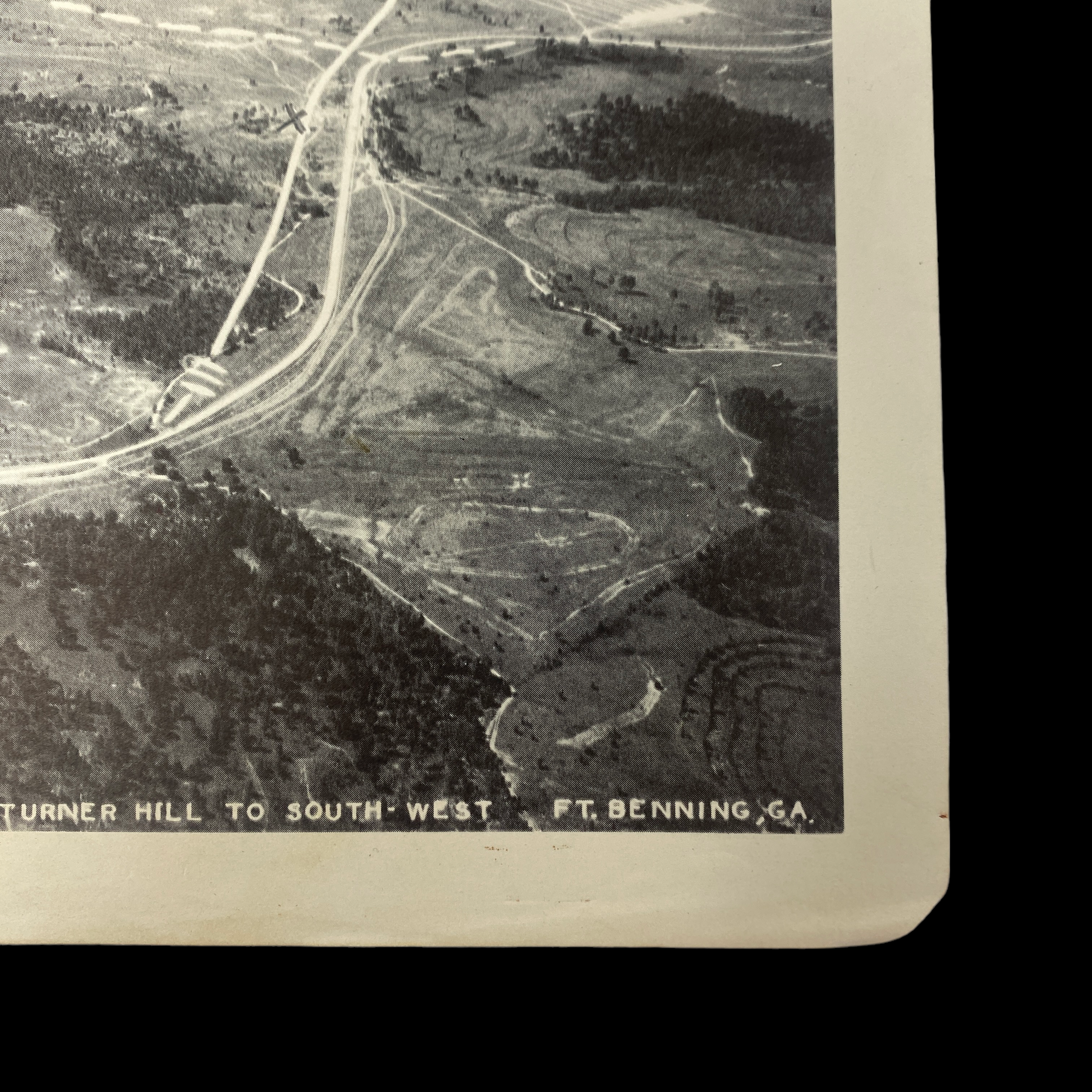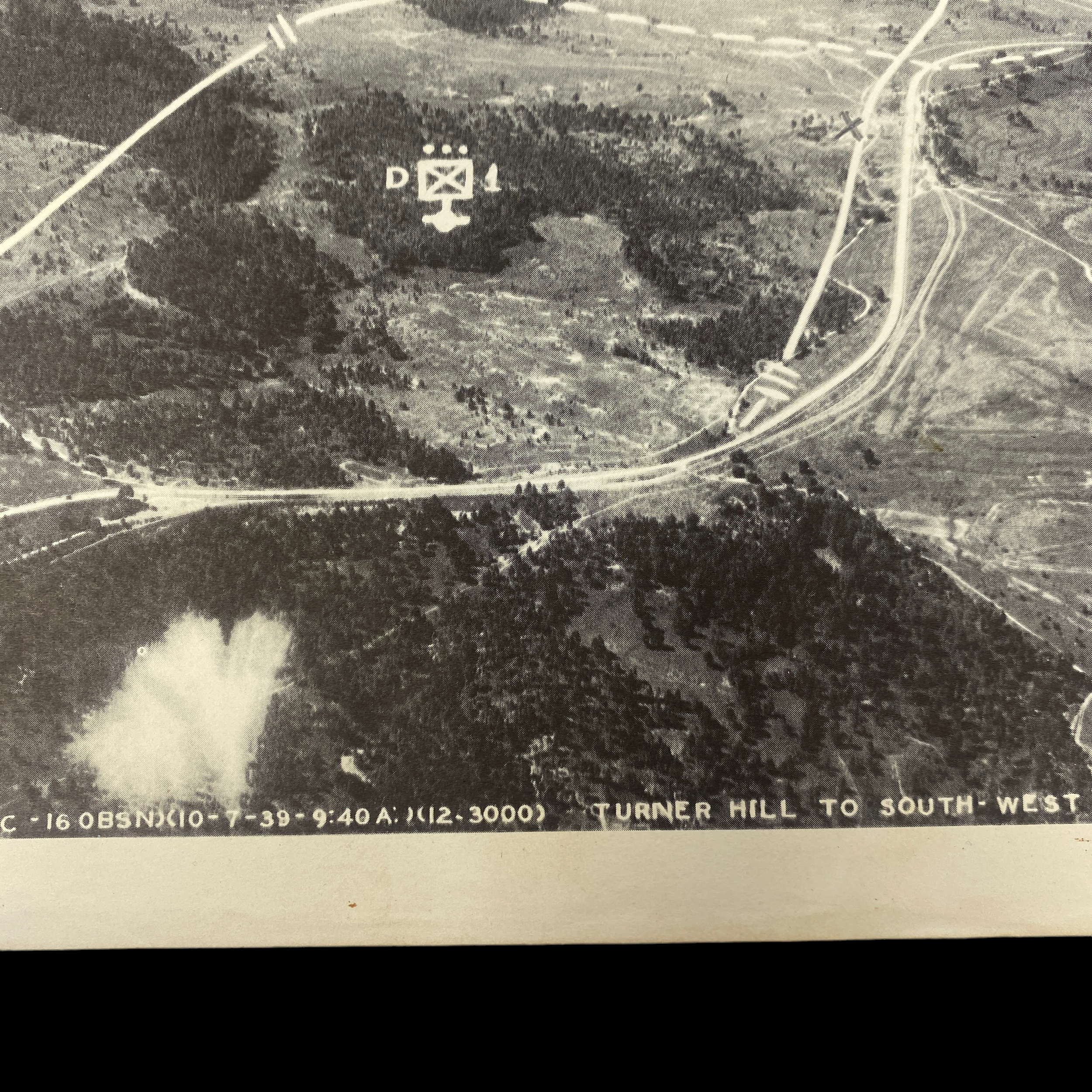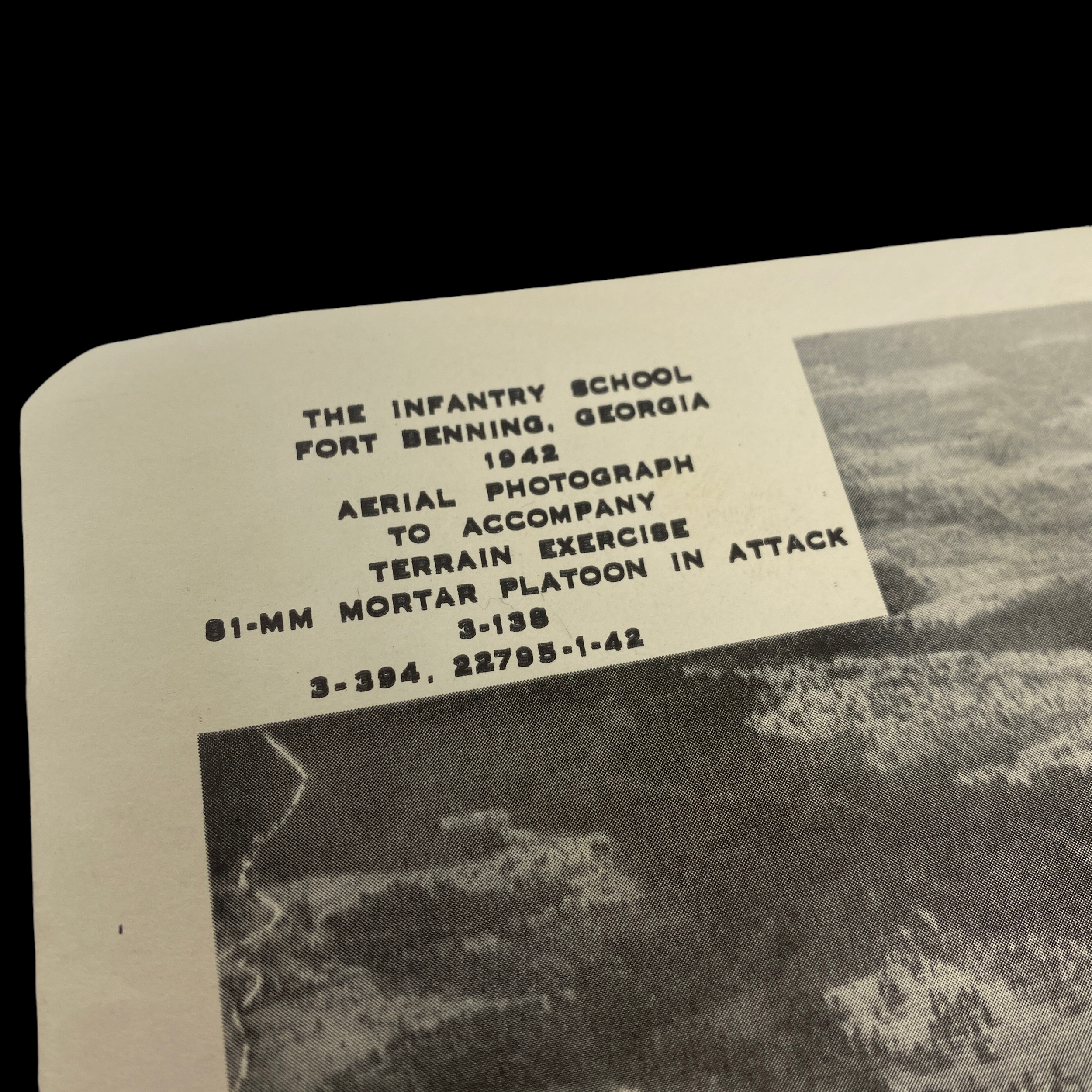1942 WWII Original Fort Benning U.S. Airborne Infantry "Aerial Photograph To Accompany Training Exercise"









1942 WWII Original Fort Benning U.S. Airborne Infantry "Aerial Photograph To Accompany Training Exercise"
Comes with hand-signed C.O.A.
Almost eighty years ago, on August 16, 1940, while World War II was raging but before the United States had entered the war, a platoon of infantry soldiers at Fort Benning completed four days of parachute jumps in a test that led to creation of the Army's elite paratrooper units, known as the Airborne. Fort Benning established the U.S. Army Parachute Test Platoon, which began that first series of test jumps that ran from Aug. 13 through Aug. 16. Soon, U.S. Army Airborne units were formed. Later, with the nation in the war on both sides of the globe, it was some of those same units and soldier’s that trained with this exact map made history parachuting into the darkness over occupied France on D-Day June 6, 1944. They seized key terrain and disrupted communications ahead of the massive Allied amphibious landings that began hours later on the Normandy coast.
This original early WWII “Aerial Photograph” is dated 1942 and was used to train some of America’s earliest WWII infantry and Airborne soldiers. This aerial photograph was used to accompany the terrain exercise of the 1 mm mortar platoon in attack and was used to train soldiers how to manuever and advance towards an objective. This aeiral map is in incredible condition given its age and was saved by a WWII veteran of Fort Benning.
Fort Benning, Georgia played a crucial role in the training of the Airborne and Infantry units during the early years of World War II. Located just outside of Columbus, Georgia, Fort Benning was established in 1918 and quickly became a key training center for the United States military.
The Airborne units were some of the first to be trained at Fort Benning. These highly specialized and elite soldiers were responsible for conducting parachute assaults behind enemy lines and engaging in guerrilla warfare. The rigorous training that they underwent at Fort Benning included physical conditioning, marksmanship, and parachute training.
One of the key figures responsible for the development of the Airborne units was Major William C. Lee. Major Lee, who is often referred to as the "Father of the Airborne," was instrumental in the creation of the 501st Parachute Battalion at Fort Benning in 1940. This unit would go on to serve with distinction in World War II, participating in numerous parachute assaults including the invasion of Normandy.
In addition to the Airborne units, Fort Benning also played a major role in the training of Infantry units. These soldiers were the backbone of the United States Army and were responsible for engaging in ground combat against the enemy. The Infantry training at Fort Benning was designed to prepare soldiers for the harsh realities of war, and included physical conditioning, marksmanship, and tactical training.
One of the key figures responsible for the development of Infantry training at Fort Benning was General George C. Marshall. General Marshall, who later served as the Chief of Staff of the Army and the Secretary of State, was instrumental in the creation of the Infantry School at Fort Benning in 1911. The Infantry School at Fort Benning would go on to train countless soldiers who would go on to serve with distinction in World War II and beyond.
In conclusion, Fort Benning played a vital role in the training of the Airborne and Infantry units during the early years of World War II. The rigorous training that these soldiers received at Fort Benning prepared them for the challenges that they would face on the battlefield and allowed them to serve with distinction in defense of their country.